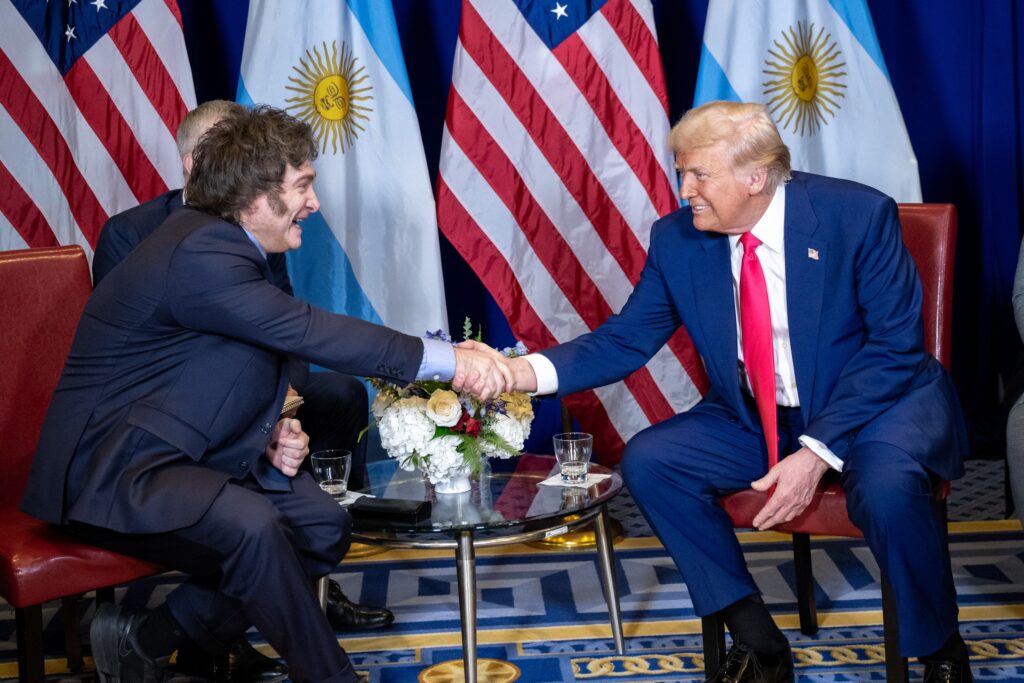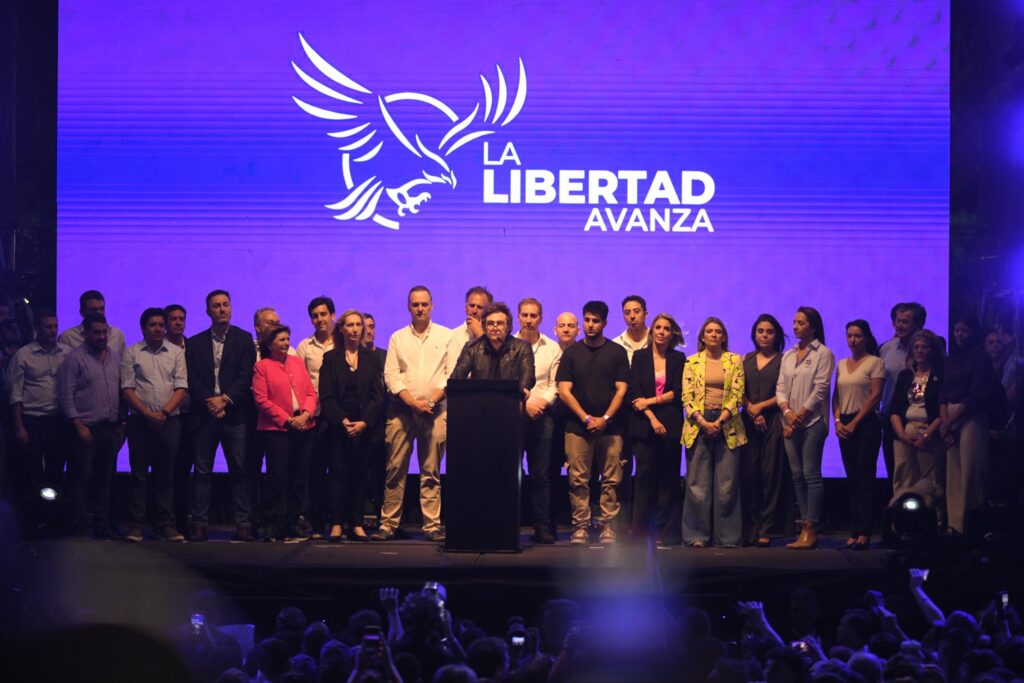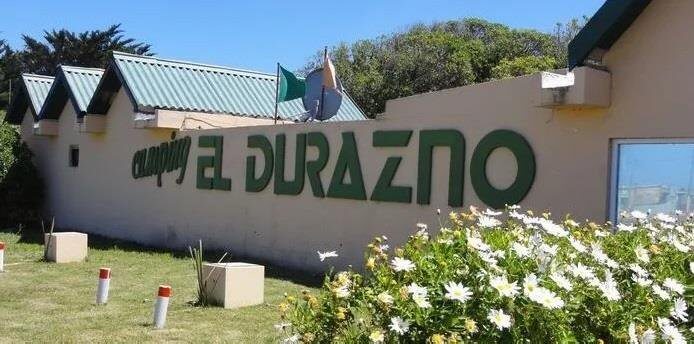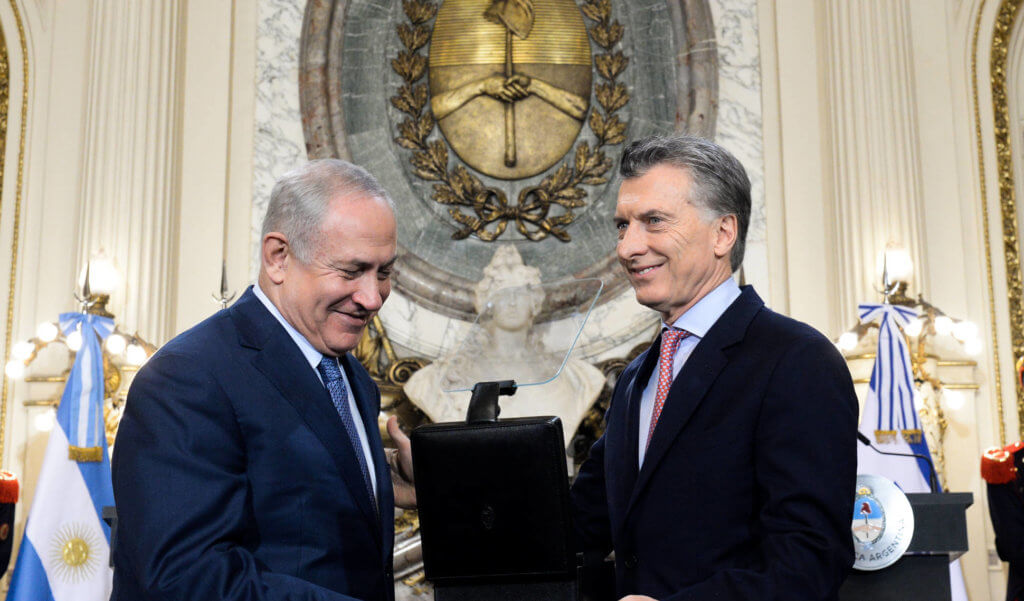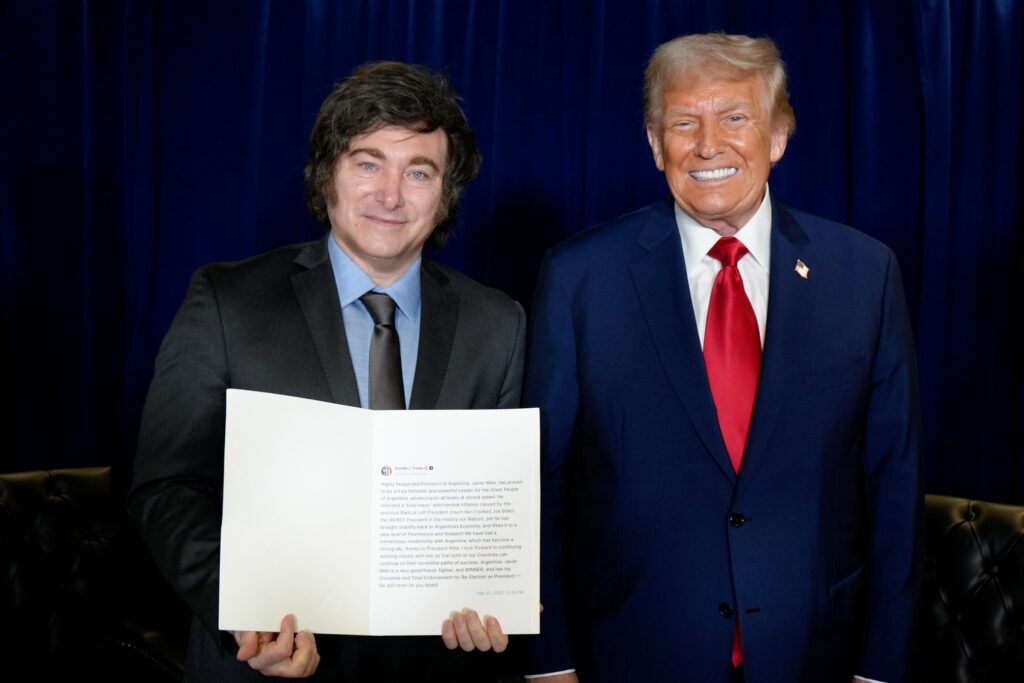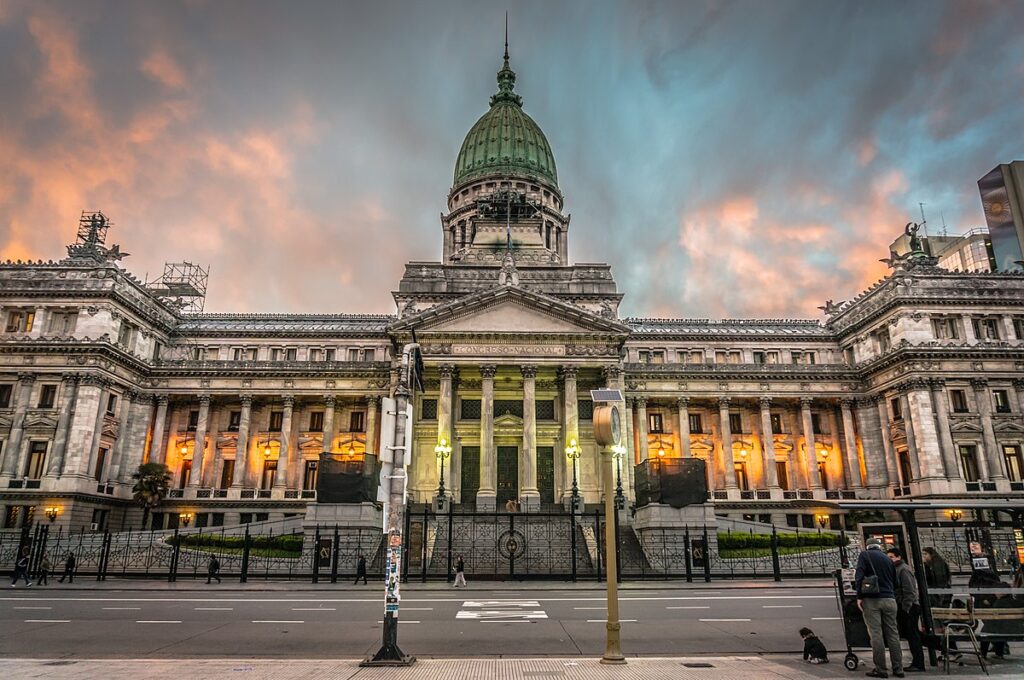Buenos Aires, Argentina – Argentina and the United States have announced the framework for a new trade agreement between the two countries, in the latest development of an increasingly close relationship.
According to a White House statement, the “Framework for an Agreement on Reciprocal Trade and Investment seeks to drive long-term growth, expand opportunity, and create a transparent and rules-based environment for commerce and innovation.”
Argentina’s Minister of Foreign Affairs, Pablo Quirno, said “the agreement creates the conditions to increase U.S. investments in Argentina and includes a reduction of tariffs for key industries, increasing bilateral trade between both countries.”
The framework also states that “Argentina will enhance cooperation with the United States to combat non-market policies and practices of other countries,” likely in reference to China’s strong presence in the region.
Thursday’s announcement comes weeks after Argentina’s midterm elections, which saw Javier Milei’s party, La Libertad Avanza (LLA), secure a major victory. The libertarian President is implementing a radical programme of deregulation and austerity in an attempt to rid the South American country of its persistent economic woes.
Whilst Milei was successful in bringing inflation down, the economy has stalled in recent months as demand has dropped. Following LLA’s defeat in the September legislative elections in Buenos Aires Province, a run on the peso dangerously drained the central bank’s reserves, prompting the U.S. to intervene with a $20 billion dollar currency swap.
The Trump Administration has so far taken an unusually keen interest in Latin America, most notably in Venezuela and Argentina. In the case of Argentina, its policy appears partly to be fuelled by fears over China’s hefty influence and the repercussions that this may have for U.S. access to critical rare earth elements and other resources amid trade tensions between the two superpowers.
Gastón Massari Copes, Head of Latin American Affairs at corporate and public affairs firm RXN, told Latin America Reports that “U.S. investments are in a race against time with China” and “the cost of inaction would be losing access to critical minerals and strategic resources essential for the global economic transformation currently underway.”
The rare earth elements are a group of 17 metallic elements that are essential for the auto, electronic, defense, and energy industries. Although China currently dominates the production and refining of these metals, Argentina has identified nearly 200 thousand tons of rare earth elements and estimates its potential resources at 3.3 million tons.
On top of this, Argentina holds 13.3% of the world’s lithium reserves, making it a very appealing option for mining investment. Similarly to the rare earth metals, lithium has important uses in the auto and energy industries.
Most of Argentina’s lithium is located in the so-called “Lithium Triangle,” a high-altitude area host to over half of the world’s reserves of the element, which it shares with neighbors Bolivia and Chile.
At a briefing attended by Latin America Reports, Ryan Berg, director of the Americas Program at the Centre for Strategic and International Studies (CSIS), explained that the relationship between the U.S. and Argentina “can set a precedent for the rest of the region […] to take note that overtly aligning with Washington on some of these priority issues, like security, like counter-narcotics, like China, minerals, […] can bring real, tangible, benefit.”
Berg added that “the [Trump] administration sees the panorama of elections that are coming up in Latin America as a hinge moment” where “you might have a number of elections that bring to power center or center-right governments.”
With Bolivia’s Movement Towards Socialism (MAS) party having been voted out in favor of a centrist candidate earlier this year, and Chile looking likely to follow suit in shifting right this year, Argentina’s resource rich neighbors do indeed appear to be moving towards the free-market approach that the U.S. and President Milei champion.
Moreover, the Trump administration has already begun to influence Milei’s policy since issuing its $20 billion dollar lifeline to Argentina.

In October, The Wall Street Journal reported that Scott Bessent had spoken to Argentine economic minister Luis Caputo about cutting China’s access to the country’s natural resources. This appears to have been triggered by China’s imposition of restrictions on new rare earth exports, which have since been suspended.
Earlier this month, Milei’s government decided to halt the construction of a $350 million dollar radio-telescope that had been planned in collaboration with China on Argentine soil. Given the U.S.’s previous concerns over the expansion of China’s network of space observation radars in Latin America and the timing of the announcement, it seems probable that the Trump administration would have influenced this decision.
Massari Copes stated that the Trump administration is “obviously feeling the pressure of recent export controls that the Chinese have placed,” and emphasized that “mineral deals are always very, very welcome […] in the halls of the White House at this time.”
However, despite the U.S. government’s keen interest, many private investors still hold their reservations.
This sentiment is reflected in the disparity between how much foreign direct investment Argentina receives compared to its similarly resource-endowed neighbor Chile. Whilst Chile has consistently seen high levels of FDI — $9.5 billion dollars in the first seven months of 2025 — Argentina only registered $551 million dollars of FDI entering the country, and more than $2 billion dollars leaving it, from January to May of this year.
One of the main issues that deters foreign investment in Argentina is the lack of adequate infrastructure. Political reporter Gabriel Ziblat explained at the briefing that “when companies see the situation […] they say, Chile is better, because they have the infrastructure that Argentina doesn’t have.”
Berg echoed this, saying that “the only folks who are interested in buying it [Argentine mines] right now are probably the Chinese, because then they’ll build out the infrastructure as well, to get to and from the mine.”
Furthermore, Argentina’s minerals, gas, and petroleum is not owned by the central government, but by the provinces. This means that investors have to go through different sets of bureaucracies and agree deals with local governors, making it at times a lengthy and difficult process.

To complicate matters even more, none of Argentina’s provincial governors are part of Milei’s party and the two have often clashed. As a result, there has been no unified approach to seeking investment.
Berg highlighted that, despite the central government’s attempts to attract investment from the U.S., local officials naturally make decisions “in what they see as the best interests of the people who elected them.” “They’re not making them with the mindset of ‘this could play majorly in U.S.-China global competition,’” he added.
Nonetheless, Milei has made significant efforts to clear these roadblocks.
Last year, the government implemented the Large Investment Incentive Regime (RIGI), which offers generous benefits to investments of over $200 million dollars, including tax breaks and exemptions for a period of 30 years.
Moreover, since LLA’s major victory in the midterm elections in October, there has been increased dialogue between the central government and the provinces. Pablo Quirno said that they are working to provide the provinces with increased funding so that they “can use those funds and carry out infrastructure works that are more difficult for us to do.”
Major Argentine newspaper Clarín has reported that some provinces are even seeking international financing from Wall Street banks to fund the infrastructure improvements that Argentina needs in order to draw foreign investment.
The government has also managed to get provincial governors on board with its proposed deregulatory labor reforms which would, among other things, allow the extension of the working day to 12 hours and reduce the cost of lay-offs. After a meeting with 20 of the country’s 24 provincial governors, Milei spoke of “absolute consensus” regarding the matter.
This show of unity will undoubtedly reassure investors that the government has the capacity to keep going with its free-market programme, despite its minority in both legislative chambers.
With 42% of the Argentine workforce in informal employment, the President hopes that these reforms will drive growth and encourage businesses to hire without the fear of prohibitively high severance costs.
The proposed labor laws are part of a wider plan of “second-generation reforms,” which also include a simplification and reduction of taxes and trade liberalization, aimed at stimulating the economy.
According to Massari Copes, “these are the most favorable circumstances in decades for Argentina to attract foreign investment. The outlook and policy direction are clearer than they have been for a very long time.”
It remains to be seen whether Milei’s efforts will have what it takes to bring Argentina the investment that it needs, but the conditions for it appear better than ever.
Featured image: President Donald Trump and President Javier Milei meet in February 2025 at CPAC in National Harbor, Maryland.
Image credit: The United States Embassy in Argentina via ar.usembassy.gov.


